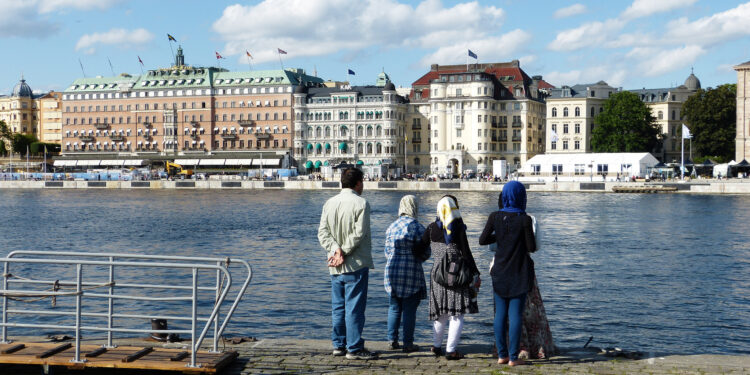Sweden is a country of some 8 million people, but the country has been welcoming more people than its population grows. As a result, Sweden’s immigration policies have become its hallmark over the past few decades. As a landlocked Nordic nation, Sweden did not have much in terms of natural resources apart from its rich soil. To leverage this and produce more agricultural output, Sweden needed to look beyond its borders for agricultural expertise and labour as well as raw materials.
With this in mind, Sweden began looking outward for ways to expand its economy and cultivate new industries that could raise the nation’s standard of living. One of the most important things that led to Sweden becoming an immigration haven after World War II was how the country welcomed refugees from all over Europe. Around 6 percent of the Swedish population is of foreign descent due to historical migrations; many more came later on too due to high economic growth and openness towards outsiders.

What is an immigration haven?
Immigration havens are states that have relatively low levels of immigration relative to their population size. Such states have usually experienced relatively low rates of outward migration in recent times, so they tend to have relatively low levels of migrants within their borders, too. As a result, immigration havens are often characterised by a homogeneous population and a lack of ethnic or cultural diversity.
The countries that tend to be the most heavily populated in the world are also typically immigration havens, due to the various ethnic and cultural backgrounds that immigrants bring. Immigration havens can also be characterised by relatively low levels of non-Western immigration, as Western countries tend to absorb the majority of immigrants.
The Importance of Immigration in an Economy
Immigration is important for any economy because it adds to the workforce and brings new ideas into a nation’s culture. New ideas and skills can spur innovation and help a country compete in the global economy. The presence of immigrants also promotes multiculturalism, which can help a country avoid conflicts by encouraging people to accept different cultures and backgrounds.
Why Did Sweden Need Immigrants?
Sweden is a very attractive place for immigrants thanks to its generous welfare benefits and its positive attitude towards immigration. These two factors make Sweden an attractive place for immigrants, as many of these individuals will want to reside in a country that is so welcoming to new arrivals. Sweden has also traditionally been a country of immigration, as many Swedish families have a connection to an immigrant relative. This has helped spur the foreign-born population in Sweden, which currently makes up around 16.5 per cent of the population.
The Policies to Achieve That
To become an immigration haven, Sweden focused on policies to attract more immigrants. First, it made sure to boost literacy rates, so that more immigrants could read and write the Swedish language. Second, it encouraged people to sponsor their relatives abroad through an immigration program called Barnen I Världen (The Children of the World). This program encouraged families to sponsor foreign-born children who were under the age of 18 or family members who were older than 18 and had been approved for permanent residence. These two policies are especially important as they help immigrants become more integrated into Swedish society and improve their quality of life.
How Immigrants Helped Growth: Major Points
– Migrants create jobs: Migrants make up a large number and variety of occupations, especially in the service sector. This is because immigrants tend to be younger and have higher fertility rates than the native-born population. In the long run, this creates more jobs and makes an economy more competitive. – Migrants invest in housing: Immigrants tend to have higher rates of home ownership than the native-born population. This is because immigrants, especially skilled ones, have the incentive to invest in Sweden due to the high rates of return they can expect on their skill sets. – Migrants are more likely to have children: Immigrants tend to have higher rates of childbearing than the native-born population. This is because immigrants tend to be younger and have higher fertility rates than the native-born population.
Current Issues with Sweden’s Future Growth
One of the biggest concerns surrounding Sweden is the country’s rapidly aging population. Swedish law requires that every person who turns 18 receives a portion of the state pension, despite whether they have contributed to the system or not. This means that the population is ageing much faster than the Swedish government can fund pension increases. If a large portion of the population stops working, then the economy will be negatively impacted. To combat this issue, Sweden has implemented several reforms, including an increase in the working-age population and a rise in immigration.
Conclusion
After World War II, many European states experienced a period of low growth and high unemployment due to societal and economic strain related to the war. Sweden, however, had several factors working in its favour, which helped the country overcome these issues. Nowadays, the country continues to be a leader in immigration, especially in Western Europe. With a population of 8 million people, the only way for Sweden to grow is through immigration, and these policies are helping the nation achieve that goal.










